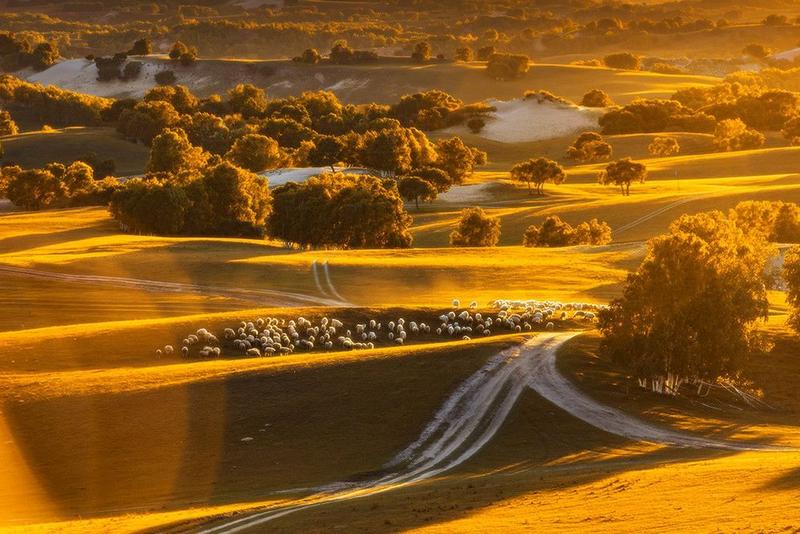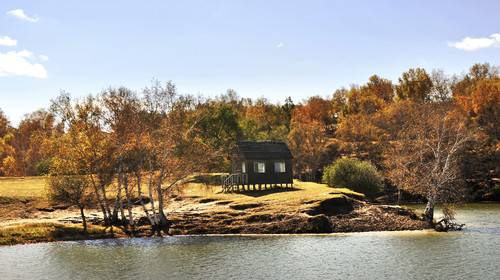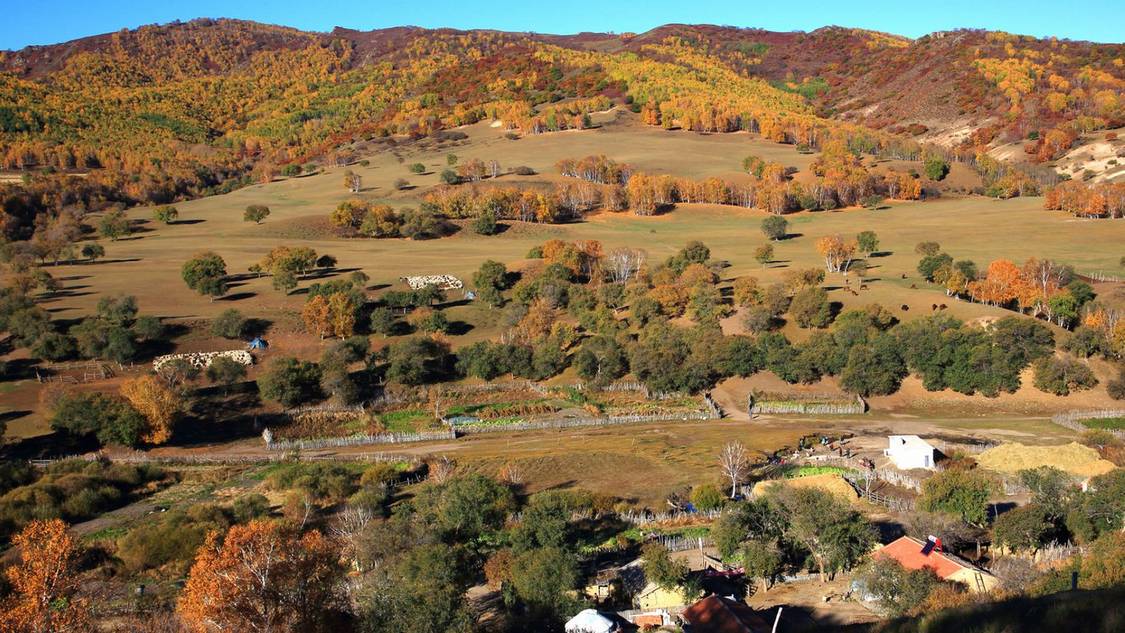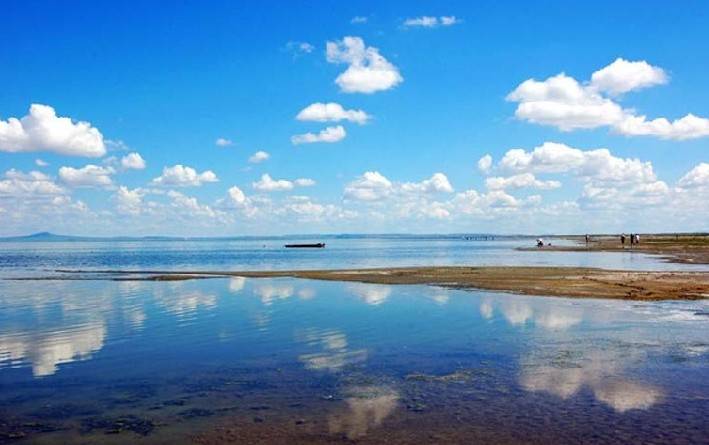Saihanba National Forest Park, Hebei
The builders of Saihanba Forest Farm spent 55 years transforming Saihanba from a desert land of 'yellow sand covering the sky' into a 'land of rivers, sea of clouds, forest of flowers, and birds singing.' They responded to the Party's call and always remembered the historical mission of ecological construction and protection. This is how today's Saihanba came to be, embodying the 'Saihanba Spirit' advocated by President Xi, which values green mountains and clear waters over gold and silver mountains. The vast forest sea, expansive grasslands, clear plateau lakes, historical relics from the Qing Dynasty, 1.06 million acres of forest landscape, and 200,000 acres of grassland landscape. The Manchu, Mongolian, and Han ethnic groups have long lived and thrived here, with their cultures blending to create a rich ethnic atmosphere. This winding asphalt road connects Saihanba with the Ulan Butong Grassland, making it the most colorful and splendid scenery of Saihanba in autumn.
Hama Ba
The origin of the name Hama Ba is unclear, but it is a 'treasure land' for photography, where one can take countless photos and always find something new. The charm of Hama Ba can be described with two words: 'natural beauty'. The geographical formation consists of two mountains running north to south with a valley in between. At the bottom of the valley is a small river that can almost be crossed in a single step. Scattered along the slopes of the valley are dozens of thatched cottages and newly built red brick houses. The crowing of roosters and barking of dogs, along with the curling smoke from chimneys, create a rustic and primitive pastoral atmosphere.
Beigou
Due to its location in the northern part of the original site, spanning north and south of the military horse farm for more than ten kilometers, locals habitually refer to it as 'Beigou', hence the name 'Nangou'. Beigou is most famous for its sunrise. Climbing halfway up the mountain, you can see the distant sky slowly turning white, with a thousand miles of morning glow. When the sun rises from the horizon of the grassland, a burst of bright light appears. The morning mist, yurts, and grassland combine to form a magnificent scene. I still remember once setting off at 4 a.m., with car lights illuminating the way, looking like a necklace embedded in the dark grassland.
Located in the northeast of Keshiketeng Banner, Inner Mongolia, at an altitude of 2029 meters, it is a remnant of the Greater Khingan Range. This area preserves the most complete form of Quaternary glaciers, characterized by typical valley glaciers. On both sides of Huanggangliang, there are glacial relics such as cirques, U-shaped valleys, arêtes, terminal moraines, lateral moraines, striated stones, and erratics. These are the best-preserved Quaternary glacial relics discovered so far, with the most complete glacial landforms and the highest scientific research value.
Daqingshan
Daqingshan Park is one of the nine major geological parks in Keshiketeng Banner. The scenic area boasts Inner Mongolia's first alpine cableway and is known as 'Inner Mongolia's largest pictographic stone.' Tourist attractions include the Quaternary glacial relics rock potholes, pictographic stones, peak forests, and alpine meadows.
Dalinuoer Lake is a plateau inland lake, translated in Chinese as "a lake as vast as the sea". It is one of the four famous lakes in the Inner Mongolia region and the largest lake in Chifeng City, Inner Mongolia.















